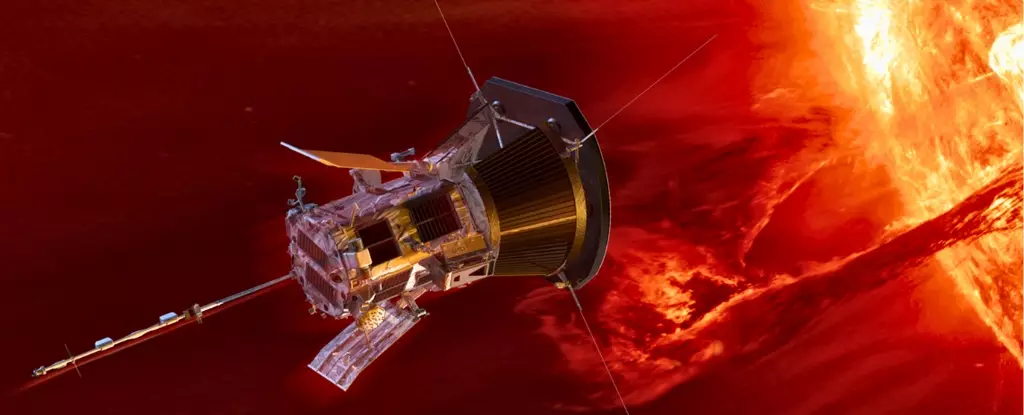Launched in August 2018, NASA’s Parker Solar Probe (PSP) embarked on a groundbreaking mission to investigate the Sun’s outer corona. This ambitious endeavor has redefined our understanding of solar phenomena and set the stage for unprecedented advancements in solar science. The Parker Solar Probe, equipped with cutting-edge technology, has not only captured critical data but has also broken historic records, thus establishing itself as the closest human-made object to the Sun.
On October 29, 2018, the Parker Solar Probe marked its place in history by eclipsing the distance record previously held by Helios 2, a notable achievement in the arena of solar exploration. With its complex trajectory involving gravity-assist flybys of Venus, the probe utilized a series of calculated maneuvers to gradually decrease its distance from the Sun. By December 24, 2024, NASA confirmed that the spacecraft accomplished its closest approach to the Sun, reaching an astounding 6 million kilometers (3.8 million miles) above the solar surface—a mere 0.04 astronomical units (AU) from the Sun. This proximity enables the PSP to gather invaluable data, positioning it as an essential tool for studying the origins and behavior of solar winds.
Furthermore, the Parker Solar Probe has traveled at staggering speeds during its close encounters. At its latest pass, the probe achieved a velocity of approximately 692,000 km/h (430,000 mph), translating to nearly 0.064% of the speed of light. This remarkable velocity validates the probe’s status as the fastest human-made object, a claim that underscores the incredible advancements in engineering and space travel technologies.
To facilitate its close encounters with the Sun, the Parker Solar Probe is built to withstand the immense heat and radiation of the solar corona. One of its greatest enhancements is a resilient carbon foam shield, capable of enduring temperatures ranging from 980 to 1,425 °C (1,800 to 2,600 °F). This shield not only protects the spacecraft but also helps maintain optimal operating conditions for its instruments, ensuring that they perform effectively in the extreme environment of the Sun’s atmosphere.
Nicky Fox, Associate Administrator for NASA’s Science Mission Directorate, emphasizes the significance of this mission: “Flying this close to the Sun is a historic moment in humanity’s first mission to a star.” By delving into the fundamental workings of our own star, the Parker Solar Probe potentially equips us with insights that extend beyond our solar system, contributing to a broader understanding of star systems and the quest for habitable worlds.
With its innovative design and unprecedented access to the Sun, the Parker Solar Probe has already begun to unveil surprising discoveries. Its initial passes through the solar atmosphere revealed complex characteristics of the corona, including unexpected spikes and valleys, challenging previous understandings of solar structure. Additionally, the probe was able to trace the origins of unique solar wind structures known as switchbacks, greatly expanding our comprehension of solar dynamics.
The probe’s scientific objectives extend beyond simply examining solar phenomena. Its investigations into “space weather”—the interaction between solar wind and the planets—have provided valuable insights into how solar activity impacts our technological systems and environments on Earth. Coupled with its discoveries around Venus, where it captured images of the planet’s radio emissions and orbital dust ring, the mission significantly enriches our knowledge of planetary interactions in the context of solar influences.
Looking ahead, the Parker Solar Probe is scheduled for subsequent solar passes on March 22, 2025, and June 19, 2025. As the mission team awaits the analysis of data collected during these encounters, the implications of these findings promise to deepen our understanding of solar and planetary interactions in ways never before imagined. Joe Westlake, director of the Heliophysics Division at NASA Headquarters, noted, “The data that will come down from the spacecraft will be fresh information about a place that we, as humanity, have never been.”
The Parker Solar Probe not only represents a monumental leap in solar research but also embodies the enduring human spirit of exploration. By challenging our understanding of the Sun, unlocking its secrets, and examining the broader universe, the mission serves as a testament to our quest for knowledge—a quest that continually shapes our relationship with the cosmos. As we stand on the verge of new discoveries, the pursuit of understanding our star remains ever vital and exhilarating in the age of space exploration.

